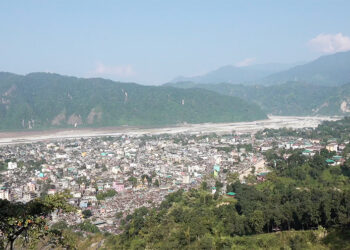Bhutan is expected to receive more rainfall by 2060. This is according to the Climate Change Projection Report 2024 of the National Centre for Hydrology and Meteorology. The northern, western, central, and southwestern districts are expected to experience a significant increase, while the east and southeast will see relatively less change.
 The report states that the major economic sectors such as agriculture, hydropower and water supply, and construction which contribute significantly to the country’s gross domestic product are under threat due to climate change.
The report states that the major economic sectors such as agriculture, hydropower and water supply, and construction which contribute significantly to the country’s gross domestic product are under threat due to climate change.
June to September is the monsoon season in Bhutan which receives more than 70 per cent of the annual rainfall. Among the monsoon months, the highest increase is likely in June and July.
The report stated that central to western parts of the country are expected to receive increased monsoon rainfall. Samtse is projected to have the highest increase. Adjoining southern districts are also likely to see substantial increases. This, the report says could elevate the risk of floods and related disasters.
However, the potential decrease in precipitation in some places in the eastern and south-eastern parts of the country raises concerns for probable seasonal drought or water scarcity.
The temperature is projected to increase across the country over several decades or by 2100.
Last year, Gasa recorded the highest number of rainy days. However, the southern part of the country received more rainfall overall, with Phuentshogling receiving the highest.
According to the report, Bhutan received increased rainfall over the years, raising concerns about risk of floods and related events in the long run.
The report calls for a critical need for robust adaptation and mitigation strategies, as outlined in the country’s climate action policies.
Kinzang Lhadon







